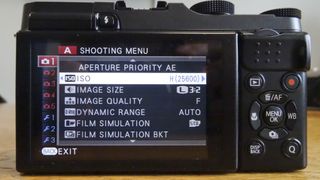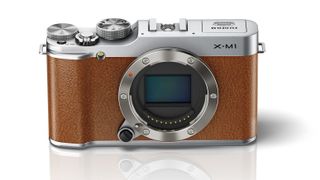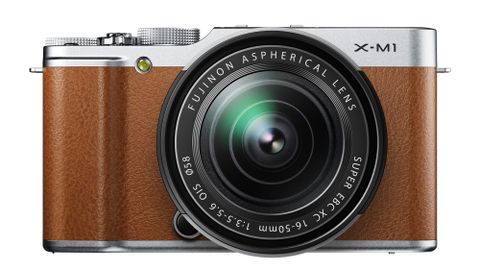Why you can trust TechRadar
Since the Fuji X-M1 has the same sensor as the Fuji X-Pro1 and the Fuji X-E1, albeit with a different processing engine, we were reasonably confident that it would be capable of performing in a similar way. Both of these previous cameras impressed us, even giving full-frame cameras a run for their money.
We're pleased to say that the Fuji X-M1 doesn't disappoint. Images are bright and punchy without being overly vibrant, while the amount of detail resolved is fantastic. To really appreciate the amount of detail resolved, be sure to have a look at the full resolution sample images on the following pages.
Shooting in the 'standard' film mode is a replication of the Provia film stock, and gives images a pleasing filmic quality. If you want to boost colours, switching to Velvia increases contrast and saturation and works well in a variety of conditions - though it may make some colours, such as the greens in grass, look unnatural.

Other options available to use as a film simulation include black and white, which is rendered pretty nicely. The good thing about using simulations is that you can shoot in raw format, should you decide to make your own edits further down the line, for which you'll want to work with a 'clean' image.
Digital filters are also available, including Toy Camera and Dynamic Tone. The range available on the Fuji X-M1 isn't as wide as on rival cameras, such as the Olympus E-PL5 or Sony NEX-3N, which is a little disappointing. You also lose both the capability to keep creative control over aperture and shutter speed, as well as the ability to shoot in raw format - so whatever you shoot, you'll be stuck with.
Generally, automatic white balance does a good job of reproducing accurate colours without presenting a colour cast. It does struggle slightly when shooting under warm artificial lights, erring slightly towards warm tones. It seems to have improved since the Fuji X-Pro1 though, but if you find the camera is struggling, switching to a more appropriate white balance setting is pretty easy.

All purpose metering (known as 'photometry' in Fuji language) also does a reasonable job in the majority of conditions, providing balanced exposures even when shooting in high contrast situations. Again, if the camera is struggling, switching to spot metering is beneficial.
Low light performance is good, with the large sensor helping to capture the maximum amount of light possible. Noise is well controlled throughout the lower sensitivity ranges, while detail is still retained impressively well. There's very little evidence of image smoothing, especially at lower ISO values.
Once you start to hit the higher values of around ISO 1600, noise does start to become evident, but only if examining images closely at 100%. Images up at the very high sensitivities, such as ISO 3200, are still useable at standard printing and web sizes (such as A4/US letter size).

Autofocusing speeds are not one of the advertised selling points of the Fuji X-M1, and it's true to say that it can't compete with the lightning-quick speeds of cameras such as the Panasonic GF6 or Olympus PEN Mini E-PM2. But for most everyday situations it copes reasonably well, only hunting slightly in low contrast situations or lower light.
What is quick is start-up times and shot to shot times. There's barely any time between shots, making it a useful camera to use for street photography and the like when you want to capture the moment.
When using the Fuji X-M1 with the kit lens, it's ready to go as soon as you switch on the camera, unlike the kit lens that comes packaged with the Olympus PEN series, which needs to be extended to work.
Amy has been writing about cameras, photography and associated tech since 2009. Amy was once part of the photography testing team for Future Publishing working across TechRadar, Digital Camera, PhotoPlus, N Photo and Photography Week. For her photography, she has won awards and has been exhibited. She often partakes in unusual projects - including one intense year where she used a different camera every single day. Amy is currently the Features Editor at Amateur Photographer magazine, and in her increasingly little spare time works across a number of high-profile publications including Wired, Stuff, Digital Camera World, Expert Reviews, and just a little off-tangent, PetsRadar.


